How To Grow Basil In Water: Try No-Mess Hydroponics For Fresh Harvests Year Round
Learning how to grow hydroponic basil indoors couldn't be simpler and enables you to cultivate delicious, aromatic herbs in every season without soil.
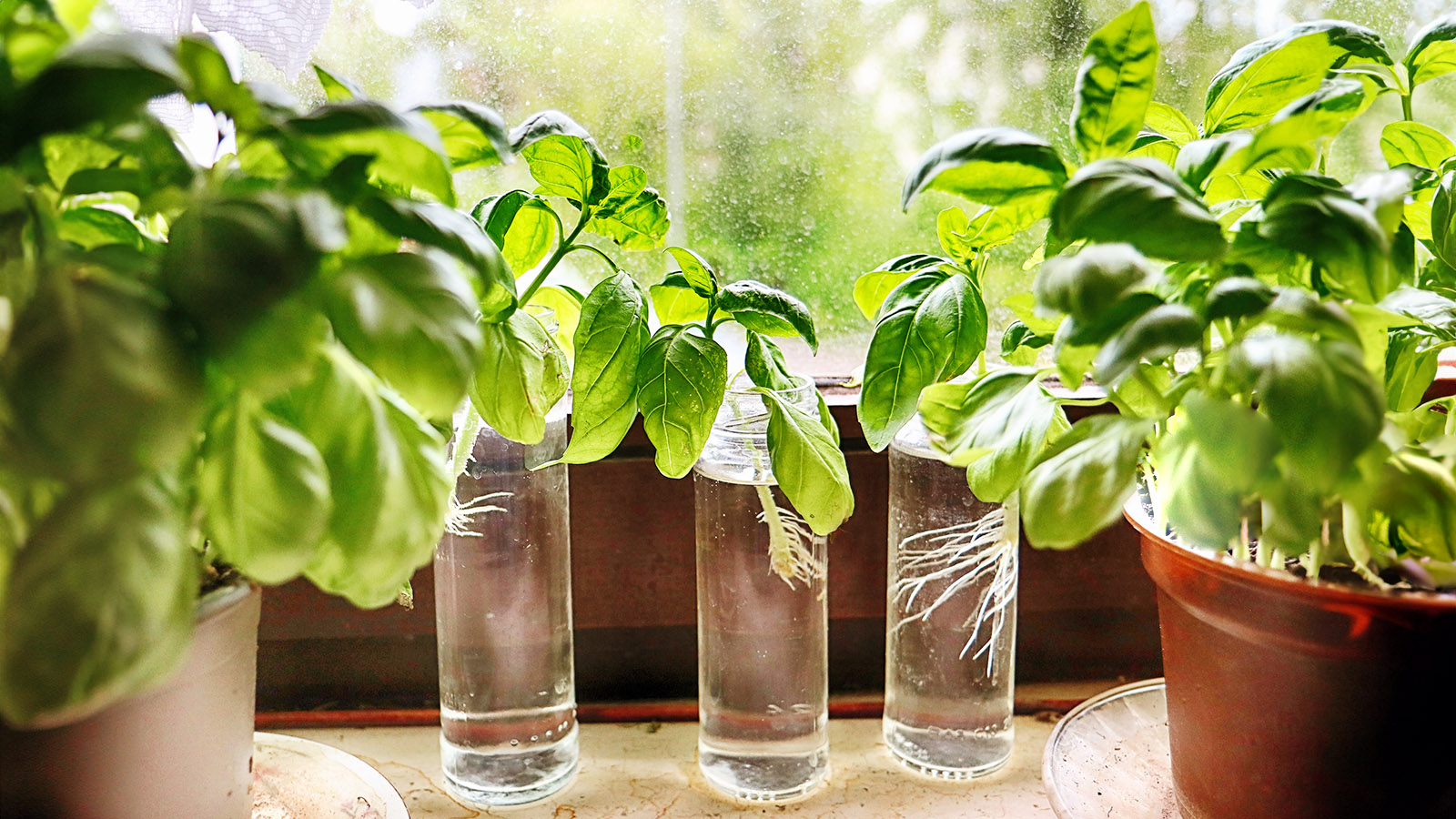

Fresh basil on your last-minute pasta dish in the middle of winter? Yes, please! Learning how to grow basil in water is the easy solution to cultivating a year-round herb garden, thanks to hydroponic techniques.
Hydroponics is a method of growing plants without soil. The plants instead are supported by other mediums, such as rockwool or clay pebbles, with nutrients delivered to them directly through the water – no soil necessary.
If you're wondering how to grow basil indoors, then hydroponics is a great place to start and requires very little equipment to do it.
Reasons to Grow Hydroponically
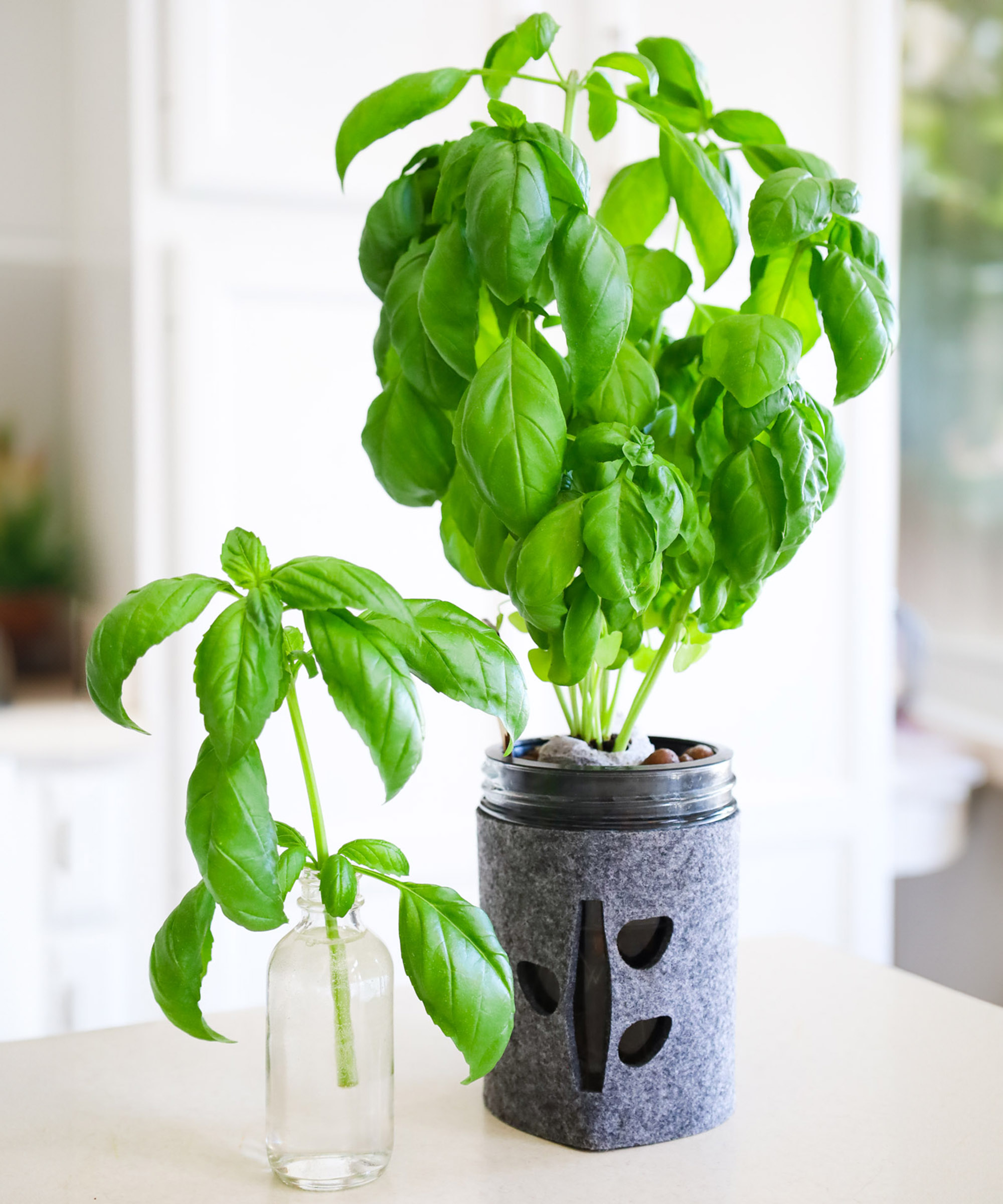
Hydroponic techniques are used by gardeners, market farmers, and commercial growers alike. Given its simple concept, you could be growing hydronic herbs in your home soon, too.
Some of the benefits of growing hydroponic basil are:
- No soil means less mess. Hydroponics does not require soil, which means no messy potting procedures. This makes hydroponic growing ideal for indoor growing.
- Grow year round. Growing indoors means you can grow year-round no matter the weather outside.
- Save space. Hydroponically grown herbs take up less space because their root zone doesn’t require soil. Grow your basil on a windowsill and you’ll still have plenty to harvest.
- Grow faster. Hydroponically grown plants often grow more quickly than plants in soil because they have more direct access to water and nutrients.
Why Basil Grows So Well in Water
Basil is an excellent herb for hydroponic growing for several reasons. Many of its characteristics align with the general benefits of hydroponics; e.g. basil grows quickly, it can be grown year-round, and its compact habit fits in small spaces.
Basil also has the ability to root quickly. If you snap off a stem from a basil plant and stick it in a glass of water, it will start to grow roots in a matter of days. This quick root initiation means you can easily grow basil from stems on a continual basis. You’ll have a constant crop of basil plants at various stages of growth.
Gardening tips, videos, info and more delivered right to your inbox!
Sign up for the Gardening Know How newsletter today and receive a free copy of our e-book "How to Grow Delicious Tomatoes".
Supplies for Growing Basil in Water
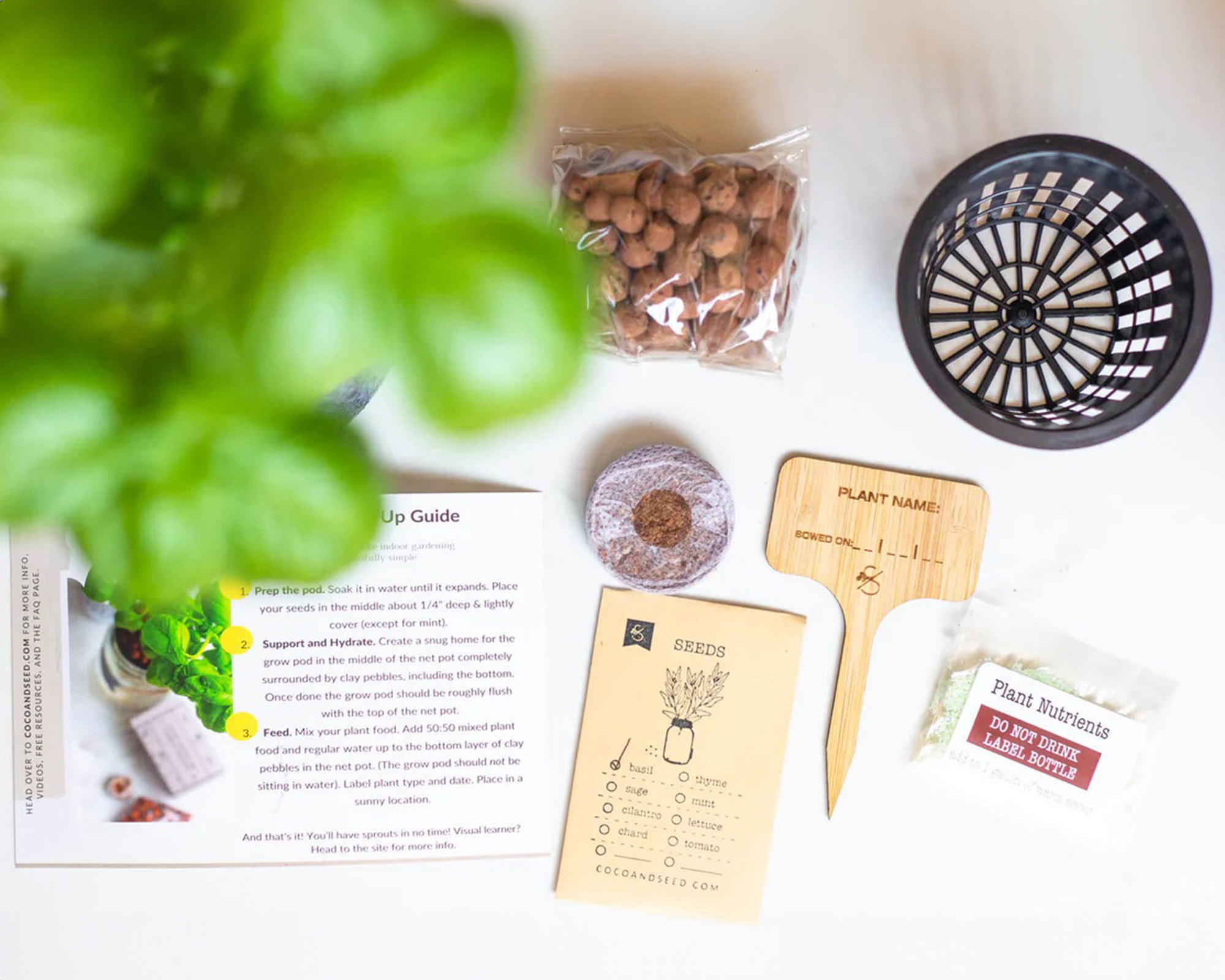
The supply list for growing basil hydroponically is much shorter than that for growing basil in pots. At its simplest, the supplies are:
A jar or container: This vessel should have a wide mouth or opening that will allow free growing of the plant’s root system. Ideally, the container will be clear so you can keep a watchful eye on those roots.
Basil: Use basil cuttings (i.e. snap off a stem from another basil plant) or start seeds in a seed-growing pod, then transfer to the hydroponic system.
A supportive growing medium: A growing medium such as clay pebbles or rockwool keeps the plant upright and provides initial support for the growing mass of roots. The material’s nature also provides aeration to the roots, which is necessary for growth.
Liquid fertilizer: This is a tidy vehicle for providing nutrients to the plants.
Coco & Seed's Basil Hydroponic Mason Jar Garden Kit, available in the Gardening Know How Shop, provides all of the above, plus a few extras, including a bamboo plant label, growing directions, a net pot to hold clay pebbles, a growing pod for planting basil seeds, and a protective cover for the 16-ounce mason jar. This kit is a great starting point for hydroponic growing — just add water and light!
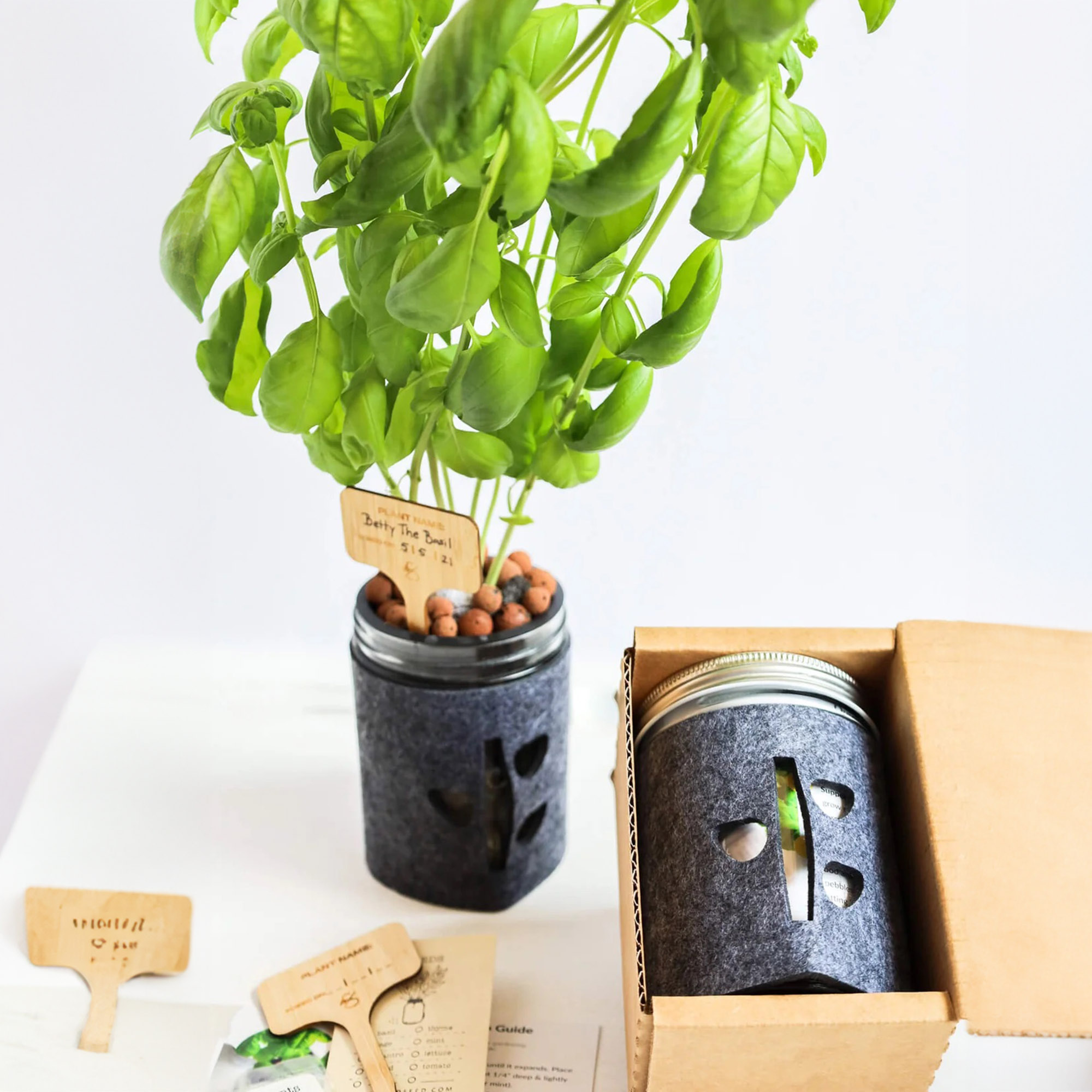
Have fun growing basil in water with this delightful mason jar growing kit. It's perfect for beginner gardeners, foodies, and green thumbs wanting to try hydroponics.
Planting Basil in the Jar
We’ll use the Mason Jar Garden Kit as an example for how to plant your basil for hydroponic growing. The kit comes with basil seeds, which will germinate in the grow pod.
- Hydrate the grow pod until it expands. Sow the seeds about ¼-inch deep then cover lightly with the expanded soilless mix.
- Place some clay pebbles on the bottom of the net pot, then set the planted grow pod inside. Add clay pebbles around the grow pod so it fits snuggly into the net pot. The grow pod’s top should be level with the top of the net pod. Place the pot in the mason jar.
- Mix the plant food according to directions. Create a 50:50 liquid mixture of the plant food and water and pour this into the jar until it reaches the bottom layer of clay pebbles. NOTE: The grow pod should not sit in water. Wrap the jar with the protective cover and place on a windowsill or under a grow light.
Taking Care of Your Hydroponic Basil
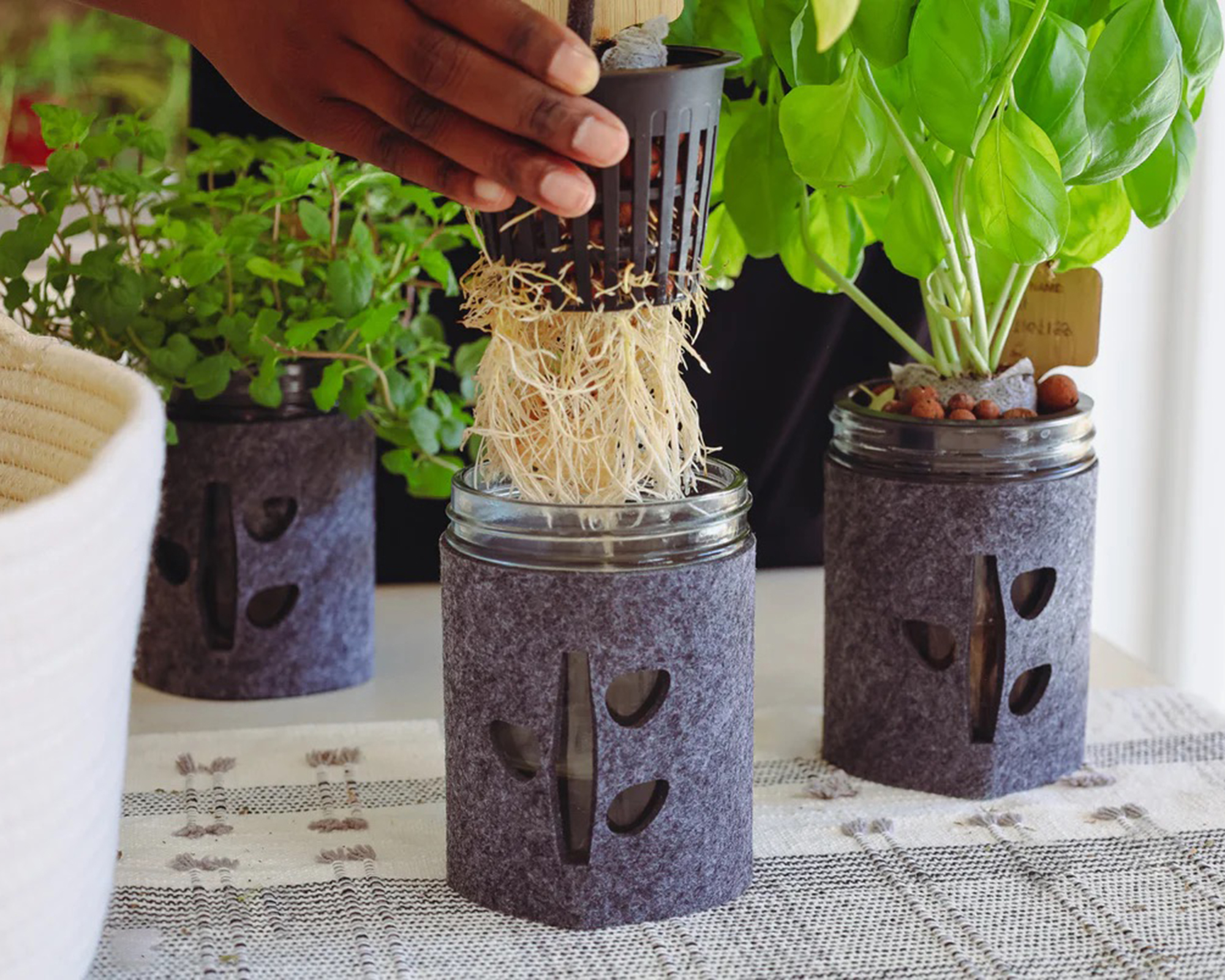
Growing from this point on is relatively low maintenance. Keep an eye on these few details for maximum success and harvestability.
Light is important, but too much direct light can harm the plant. If growing on a windowsill, choose a south- or north-facing window. Artificial light under a lamp will be fine. Provide at least 6-8 hours of light each day to prevent the plants from becoming leggy.
Watch the jar’s water level. The roots should remain moist but not fully submerged. Change the water completely every week or two to prevent the roots from standing in stagnant water. Let the water come to room temperature before adding to the jar.
Add a liquid fertilizer sparingly, about every 2-3 weeks, or according to package directions.
All indoor plants benefit from good air circulation. Set up a fan to blow gently in the jar’s direction or open a window in warmer months.
Indoor plants also benefit from humidity, especially in winter. Occasionally mist the basil leaves or set up a humidifier (your skin will love that, too!).
How to Harvest
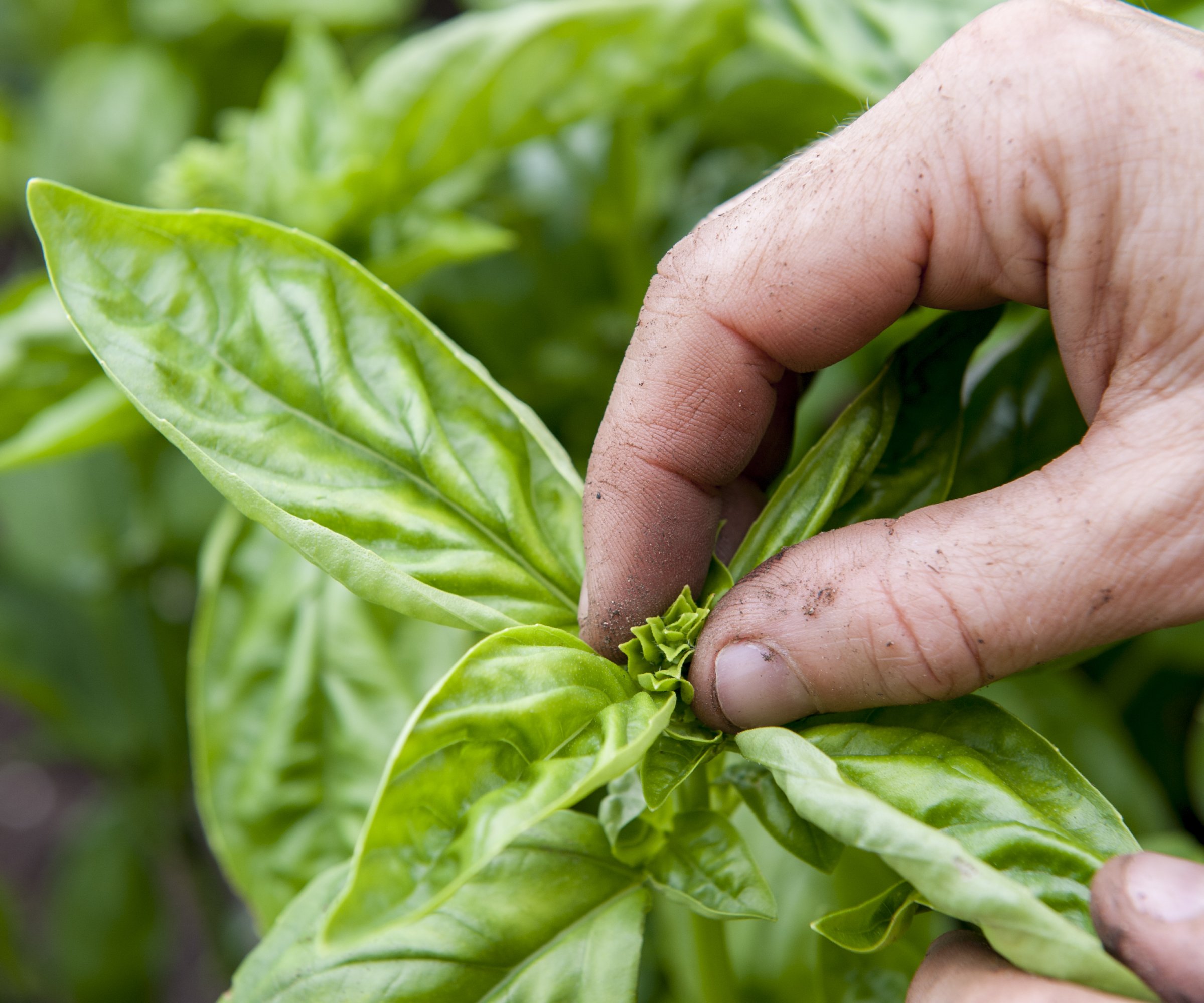
Learning how to harvest basil the right way is good for more than just your cooking. For instance, snipping leaves off the plant will keep the plant a manageable size. Also, harvesting correctly will help new shoots to grow.
The correct cut will be just above a leaf node, or where the leaves emerge from a main branch or a stem. This encourages side branches to grow and the plant to fill out with more leaves.
Take care to not remove too many branches at one time. Leaves are the energy creators for the plant, so removing them means removing the plant’s food source. A general rule of thumb is to harvest no more than one-third of the plant at a time. If you do remove up to one-third of the plant, wait for the plant to grow more leaves before making your next harvest.
Basil plants grown in water will produce harvestable leaves for 4-6 months with regular trimming. These are annual plants, however, and they will eventually reach the end of their lives. Luckily, a snapped branch or a stem cutting will easily produce roots and create a whole new plant.
When you suspect your hydroponically grown basil is nearing its end, remove a branch and place in a glass of water to initiate rooting. It’ll be ready to transplant into your pebble-filled net pot by the time your older plant is ready for the compost.
Hydroponic growing is a simple way to grow other herbs such as mint, thyme, sage, and cilantro. Each has its particular techniques, so read up on their growing instructions. You’ll be surrounded by herbs all year!
More Inspiration For Growing Indoors
- Discover how to grow a windowsill full of veggies this winter, with advice from a top gardening expert.
- Learn 3 simple tips to keep grocery store herbs thriving indoors for months.
- Enjoy a fresh kitchen harvest year-round by growing a countertop herb garden.
- Shop herb seeds and growing kits in the Gardening Know How Shop herb browse-by experience.
This article features products available from third party vendors on the Gardening Know How Shop.

Ellen Wells is a horticultural communications consultant with 30 years of experience writing about all aspects of the gardening world.
She has worked for many of horticulture’s biggest brand names, writing blog posts, articles, press releases, and design and instructional pieces. Her previous roles include Senior Editor and Editor-at-Large for Ball Publishing.
Ellen is based in New England where she gardens in Zone 7a. She loves tending to flower-filled containers on the patio and puttering around her vegetable garden.